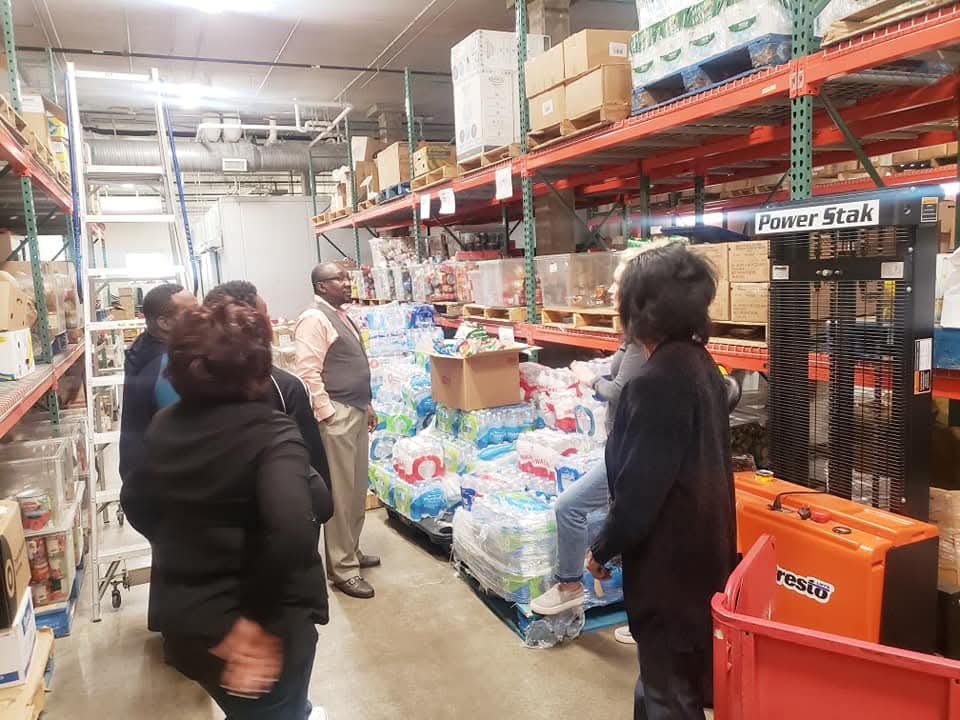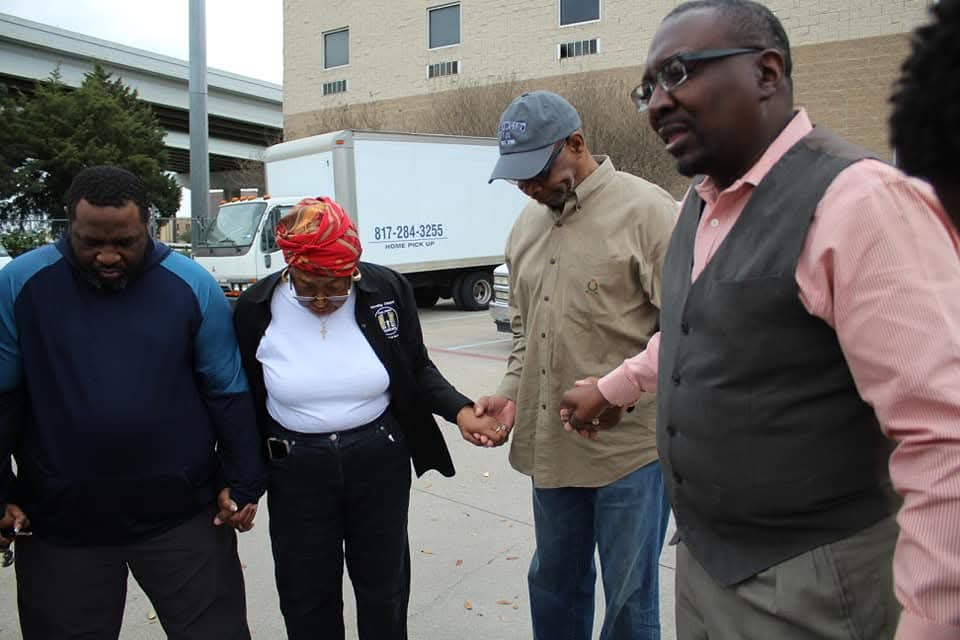In June, as the heat intensifies in states like Texas, many churches prepare for the hot summer months. This season presents an opportunity to meet both physical and spiritual needs by hosting outreach events such as food drives, backpack giveaways, youth activities, community cleanups, and distributing water to our unsheltered neighbors. Yes, something as simple as offering water to those who are hot and thirsty is essential, especially in Texas, where temperatures often reach triple digits. These acts of kindness are not just projects; they are the foundation for building visibility, healing, and meaningful connections in our communities. Isaiah 58:10 (NIV) reminds us: “If you spend yourselves on behalf of the hungry and satisfy the needs of the oppressed, then your light will rise in the darkness, and your night will become like the noonday.” Outreach is more than just doing a good deed. When paired with intentional evangelism, it becomes a powerful tool for sharing the Gospel.
When I think of outreach, I often reflect on my background in architectural engineering—designing, planning, and overseeing the construction of buildings. This approach is strategic, intentional, and built to last. After earning my degree in architectural engineering, I began my career at a firm specializing in residential structures. Every project started with a blueprint, a vision of what was to be built. In the same way, effective outreach begins with a God-given vision for how we are to serve, engage, and build relationships within our communities. As Proverbs 29:18 (KJV) reminds us, “Where there is no vision, the people perish.” This vision must be rooted in the specific needs of the community, shaped by factors such as demographics, economics, geography, and culture. For example, I serve as a pastor in downtown Fort Worth, where homelessness is a significant issue. A recent news report noted that over 2,200 individuals are experiencing homelessness in Fort Worth, a number that has increased by 11% since last year. Many are concentrated downtown due to the availability of shelters and services specifically for those experiencing homelessness.
At Morning Chapel CME, known as “The Rock Church,” we partnered with Union Gospel Mission of Tarrant County, one of the largest shelters in Fort Worth. This shelter, located near downtown, was featured in the film Same Kind of Different as Me, based on the true story of an unexpected friendship that formed through outreach. If you haven’t seen the movie or read the book, I highly recommend adding it to your summer reading list. It’s a powerful testament to how outreach transforms both your life and the lives of others. Your church may not be in a downtown area like mine. Perhaps you serve in a neighborhood with many aging adults, teen pregnancies, low-income families, or gang-involved youth. These challenges present incredible ministry opportunities. You won’t know your community’s needs unless you connect with them and conduct a needs assessment. Just as an architect is responsible for the construction of a building, we are accountable for addressing both the spiritual and practical needs of the people God calls us to reach.

How can you assess your community’s needs? Start by physically walking or driving through the neighborhood around your church. Observe housing conditions, parks, schools, and public services. Notice where people gather, which businesses are thriving or closed, and which churches are growing or declining. These observations reveal where help is needed most. This is why I love prayer walks: they not only allow me to meet and pray with neighbors, but they also help me understand the community’s needs firsthand. In architecture, framing gives a building its shape and strength. It’s critical to construction because it supports weight, resists forces, and determines the overall structure. Similarly, our churches must be seen not only as places of worship, but also as builders of hope, framing lives with love and constructing doorways to healing and transformation. “The Spirit of the Lord is on me, because he has anointed me to proclaim good news to the poor… to set the oppressed free.” (Luke 4:18 NIV)
We can no longer afford to be churches focused solely on “in-reach,” ministering only to those who are already inside our walls. If we truly follow Christ, we must also follow His example—going into the streets, shelters, homes, and hearts of those who desperately need God’s love. I’ve witnessed firsthand how individuals who were once homeless, addicted, or broken found healing, deliverance, and freedom through the power of the Holy Spirit and the faithful witness of evangelism. Many of these same people are now active church members, serving as ministry leaders and living testimonies to the transforming power of the Gospel. Let’s be honest: if your church has fewer than ten members and none of them evangelize, how can it possibly grow spiritually or numerically? Spiritual growth isn’t just about attending Bible studies or memorizing Scripture, although those are important. It’s about becoming more like Christ.
When we study the life of Jesus, we see that He didn’t stay confined to the synagogue or focus only on the religious crowd. Instead, He reached out to the hungry, the sick, the broken, and the outcasts (Matthew 25:35-40 NIV). “For the Son of Man came to seek and to save the lost.” (Luke 19:10 NIV) That is the heart of evangelism! Outreach should never be an afterthought; it is the foundation that supports evangelism.
It opens the front door and invites the community in. Through food distributions, youth mentorships, or Bible studies, we lay the groundwork for spiritual connection. 1 Corinthians 3:9 NIV says: “We are co-workers in God’s service; you are God’s field, God’s building.” Outreach is the hand; evangelism is the voice. Together, they are the architecture of God’s mission through the Church. We’re not just building programs; we’re building relationships. We’re not building walls, we’re building the Kingdom. Here are a few practical tips for building outreach with evangelism in mind:
- Always Pray Before You Serve: Begin with prayer—ask God to reveal your needs, guide your plans, and prepare your hearts. “Unless the Lord builds the house, the builders labor in vain.” (Psalm 127:1 NIV)
- Train Your Team in Evangelism: Equip your outreach team. Teach them to share their faith with compassion and confidence. “Always be prepared to give an answer to everyone who asks you to give the reason for the hope that you have.” (1 Peter 3:15 NIV)
- Follow Up with Prospective Members: Plan for follow-up—Bible studies, meals, and small groups to build genuine relationships. “Let us not become weary in doing good… we will reap a harvest if we do not give up.” (Galatians 6:9, NIV)
- Use Digital Tools: Churches can use social media and live streams to share Kingdom work and connect online. “Proclaim the good news to all creation.” (Mark 16:15 NIV)
- Include All Generations: Invite youth and children to serve. Teach them early that every age group has unique gifts to offer. “One generation shall commend your works to another.” (Psalm 145:4 ESV)
Outreach is the architecture of evangelism. It draws the blueprint, lays the foundation, and builds bridges from the Church to the community. Done with intention and prayer, it becomes a dwelling place for the presence of God in people’s lives. Let’s build together—making disciples, transforming lives, and serving the present age.





